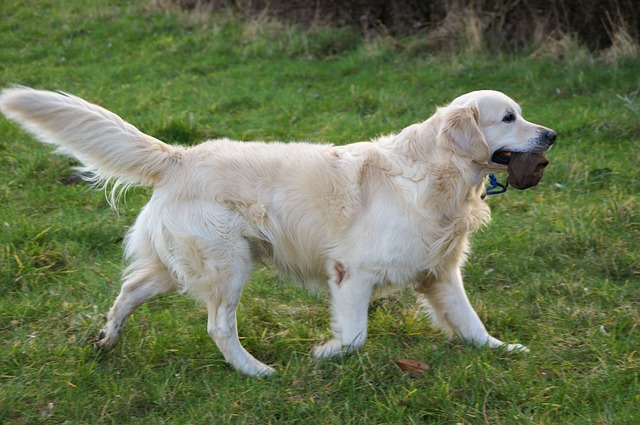Part 2 – Risk Factors for canine arthritis
Some things just can’t be helped – dogs can’t help being born a certain breed, can’t help but age, and we can hardly expect them to avoid injury forever let alone the everyday “wear and tear” that comes with healthy expenditure of energy. Still – when it comes to canine arthritis, there are factors that can be mitigated.

Size does matter
Larger dogs such as Labradors, Golden Retrievers and German Shepherds are more likely to develop arthritis.

Golden Retriever - an example of a larger breed of dog
As the years go by
Eighty percent of dogs have arthritis by the age of eight, and in some cases dogs as young as one may also show symptoms.
Maybe she’s born with it
Developmental orthopaedic disease can bite them - younger dogs can show signs of arthritis due to deformed joints from birth and during growth, such as hip or elbow dysplasia.
Echoes of trauma
Fractured bones or ligament tears can lead to arthritis due to inflammation or deformity resulting from the injury.
It’s not just a heavier load
Obesity affects the joints by more than just increasing the mechanical load. This is the one thing that can be helped – and this is the one close to our hearts.
Part 3 – Looking at Obesity in more detail and how to keep our dogs in the healthy weight range
There are plenty of memes about overweight dogs. Eg: “Exercise? I thought you said extra fries!” Sometimes they seem kind of cute, but the underlying truths they point to aren’t very funny at all – being overweight increases a dog’s risk of getting arthritis (amongst other things).

Obesity is no laughing matter
While I was studying physio, we were taught that the heavier our body, the heavier the weight on our joints. Makes sense (probably didn’t need uni for that one).
What isn’t so intuitive is that there is more to the story. It’s not just about putting on weight hoping our joints can hack it.
What also happens when we are overweight is that the fat tissue itself causes a biochemical reaction, which causes inflammation, which wears out the cartilage in the joint.
The same thing happens to our dogs.
OK, so how can we keep our dogs at a healthy weight?
Check for any hidden causes
You may be feeding your dog the healthiest food you can find, and he’s still packing on the pounds. Speak to your vet – your dog may have underlying endocrine disorder.
Make them work for it
Just like with people, exercise helps. The catch is that for overweight and obese dogs increasing some types of exercise can exacerbate joint pain, so opt for exercises in the water.

Exercising in water decreases joint pain for overweight dogs
Look at the fine print
Examine the ingredients in your dogs’ food and treats carefully – for example, some chicken treats available from supermarkets have not just one but two types of sugar: sucrose and glycerine. Beware of such treats!

Glycerine and sucrose added as sweeteners to store bought dog treats
Opt for quality treats without sugar
Yes, here’s a bit of our shameless plug ;) Our Doggie Bakery treats do not contain ANY sugar – we won’t give our own dogs anything with sugar; nor would we give any to yours.
Our chicken treats have just one ingredient - 100% Chicken Breast! Unlike the above example that has 8 ingredients!
References:
http://www.parnell.com/products/companion/what-is-osteoarthritis/
https://www.blackmores.com.au/pet.../PAW-Osteoarthritis-affects-dogs-of-all-ages
